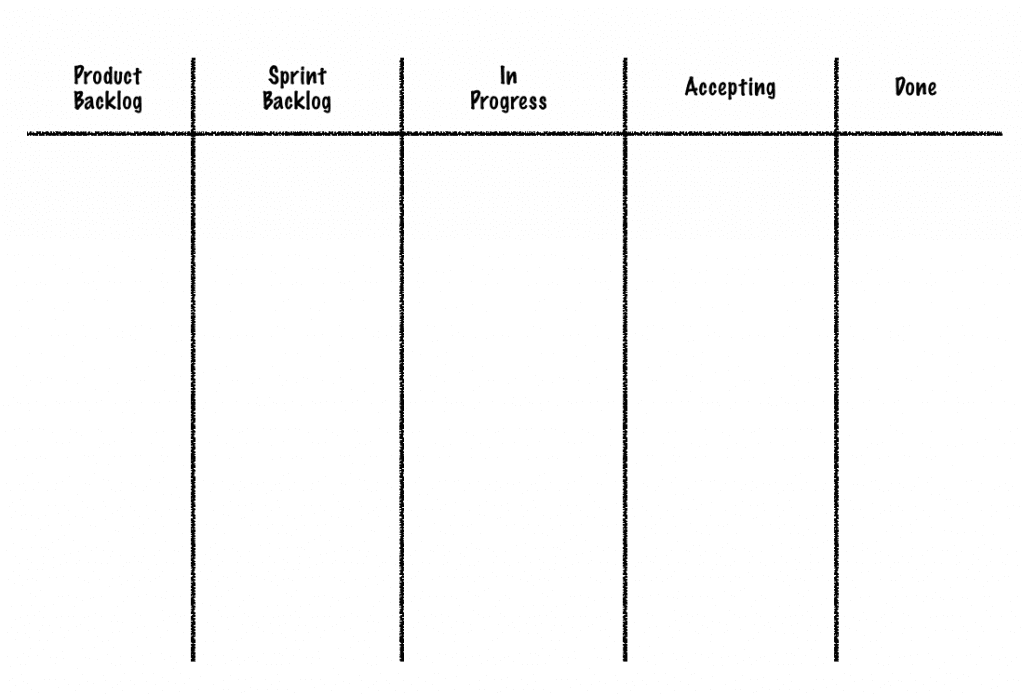During a recent kanban training course, this question came up and my simple answer seemed to be a surprise and an “aha” moment. I tweeted an abbreviated version of the question and answer, and got lots of interesting and valid responses. Few of the responses really addressed the essence of my point, so this post is a more in-depth answer to give more detail.
Q. What’s the difference between a Scrum Board and a Kanban Board?
A. WIP Limits.#Scrum #Kanban— Karl Scotland (@kjscotland) June 28, 2017
When the question came up, I began by drawing out a very generic “Scrum Board” as below:
Everyone agreed that this visualises the basic workflow of a Product Backlog Item, from being an option on the Product Backlog, to being planned into a Sprint and on the Sprint Backlog, to being worked on and In Progress, to being ready for Accepting by the Product Owner, and finally to being Done.
To convert this into a Kanban Board I simply added a number (OK, two numbers), representing a WIP limit!
And that’s it. While there are many other things that might be different on a Kanban Board to do with the flow of the work or the nature of the work, the most basic difference is the addition of a WIP limit. Or to be more pedantic you might say an explicit WIP limit, and as was also pointed out (although I can’t find the tweet now), its actually creating a pull signal.
Thus, the simple answer to the question about the difference between a Scrum board and a Kanban board is that a Kanban Board has WIP Limits, and the more sophisticated answer is that a Kanban Board signals which work can and should be pulled to maintain flow.
Of course, this isn’t to say that Scrum teams can’t have WIP limits, or pull work, or visualise their work in more creative ways. They can, and probably should! In fact the simplicity of just adding a WIP limit goes to show how compatible Scrum and Kanban can be, and how they can be stronger together.



[…] What’s the Difference Between a Scrum Board and a Kanban Board? (Karl Scotland) […]
Nice and simple. I like it!
Scrum’s not as explicit on flow as Kanban is and I think all Scrum teams should review this guidance to see if it will help them better meet their Sprint Goals.
For Kanban, I would say it is pretty much a given that you should alternate work (value-add, touch-time) vs wait (non-value-add) workflow steps. (Although I do this with Scrum as well.)
Also on Scrum boards, there is no strict pull order during the sprint, sometimes unfortunately resulting in higher ranked items “falling thru” to next sprint. For Scrum, I use something I call No Gap Pull (NGP) – effectively Kanban pull.
Straight to the point. If you’re looking for some more information about Scrum and Kanban, make sure to check out that article: https://kanbantool.com/kanban-library/scrum-and-kanban/kanban-vs-scrum-how-to-make-the-most-of-both .Enjoy!
Fantastic Kanban board tool is IC Project (https://icproject.com)